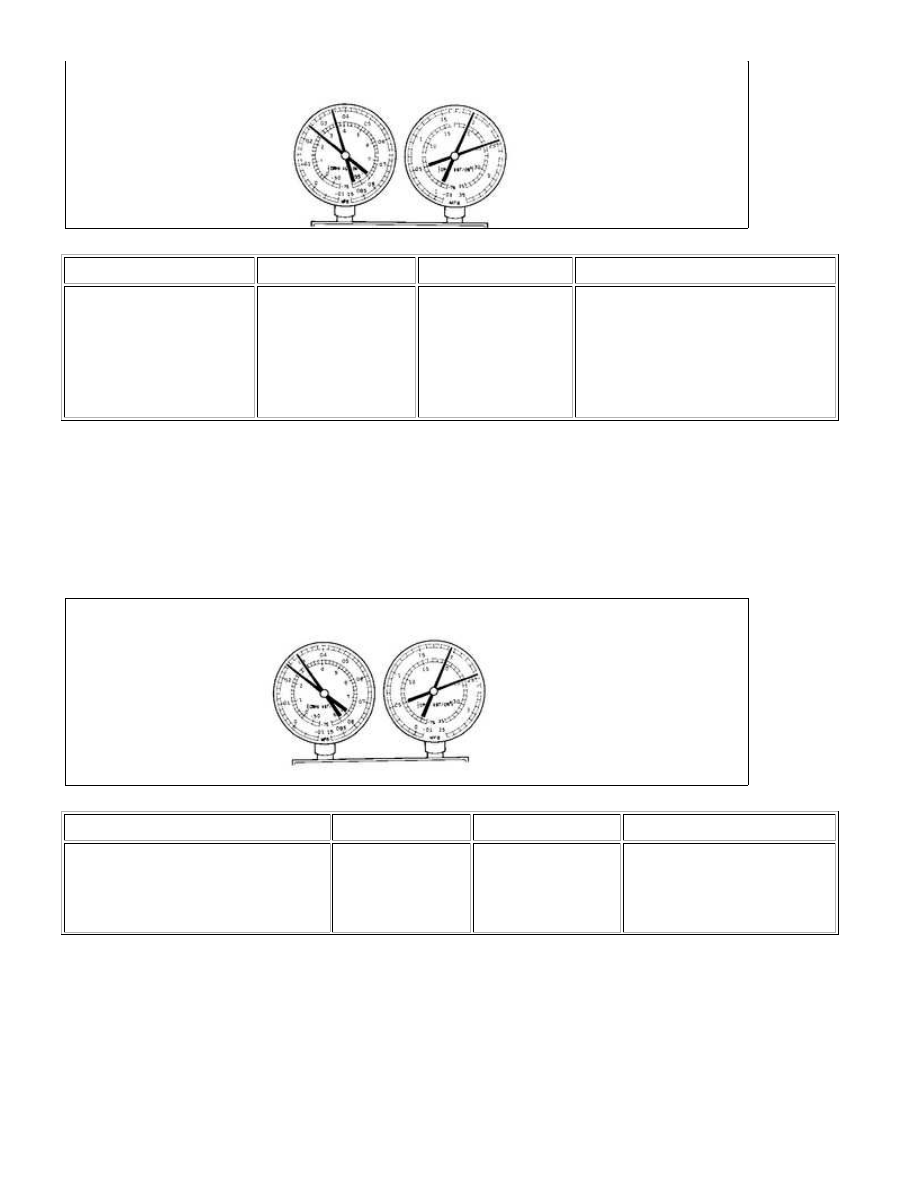Content .. 2304 2305 2306 2307 ..
Toyota Tundra (2015 year). Manual - part 2306

SYMPTOMS
PROBABLE CAUSE
DIAGNOSIS
CORRECTIVE ACTIONS
Pressure extremely high
on both low and
high-pressure sides
- Excessive
refrigerant
- Cooling performance
- Condenser is dirty
- Condenser fan
motor is
malfunctioning
- Excessive
refrigerant
1. Clean condenser
2. Check condenser fan motor
operation
3. If 1 and 2 normal, check the
(7) The A/C system does not function due to air in the refrigeration system.
CAUTION:
The low-pressure piping may be very hot and cause serious burns.
HINT:
These gauge indications occur when the refrigeration system opens and the refrigerant is charged without
vacuum purging.
SYMPTOMS
PROBABLE CAUSE
DIAGNOSIS
CORRECTIVE ACTIONS
- Pressure extremely high on both low
and high-pressure sides
- Low-pressure piping is too hot to
touch
Air in refrigeration
system
- Air in refrigeration
system
- Vacuum purging
insufficient
1. Check if compressor oil is
dirty or insufficient
2. Evacuate air and charge
new refrigerant
(8) The A/C system does not function effectively due to an expansion valve malfunction.
AIR CONDITIONING: REFRIGERANT: ON-VEHICLE INSPECTION; ...